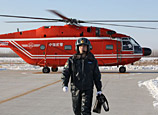
Key Words:U.S.;China;Diaoyu Island;Asia-Pacific;rebalancing;Barack Obama;
Related Reading:
>> Obama could build a legacy by boosting trust with China
>> U.S. sends wrong signal over Diaoyu Islands issue
>> US' dangerous stance
The "rebalancing strategy" is one of the major foreign strategies ever launched by the Obama administration. Although the U.S. government has changed the name of the strategy from "return to Asia" to "strategic eastward shift" and then to "strategic rebalancing" in early 2012, its core concepts remain unchanged.
As the international balance of power is undergoing profound changes, the United States has to conduct strategic contraction, and concentrate relatively limited resources on the Asia-Pacific region which is crucial to its future development, in order to maintain its dominance in the region, benefit more from the region's rapid economic growth, and contain the rise of China and other emerging powers.
"Strategic rebalancing" has several key characteristics. First, the United States has unprecedentedly given top priority to Asia in its global strategy. Second, the strategy has been carried out in political, diplomatic, economic, and military fields at the same time. Third, the United States has not only fully tapped existing resources in the region, but also made efforts to enlarge the increment of resources. Fourth, it has made full use the so-called smart power given its limited capabilities.
U.S. President Barack Obama intends to make further achievements and timely adjustments in the Asia-Pacific region during his second term. The future U.S. policy toward the region may follow three basic trends.
First, the United States may shift the focus from deeply interfering in China's maritime and territorial disputes with neighboring countries to seeking indirect competition against China. Interfering in China's disputes with neighboring countries is an important measure of the "rebalancing strategy," but it has backfired on the United States.
The United States has realized that interfering in these disputes and adopting a non-neutral stance have sent wrong signals to related countries and greatly increased the risk of being embroiled in China's disputes with neighboring countries. Obama may continue to interfere in these disputes during his second term, but adopt a relatively prudent stance. It will encourage its allies and partners to compete against China and provide them with strategic backing in order to avoid competing against China directly.
Second, it may shift from focusing on the Pacific Ocean to paying equal attention to the Pacific and Indian oceans. The Pacific was the core of Obama's "return to Asia" strategy during his first term. However, it is worth noting that he made a historic visit to Myanmar after successful re-election, and Secretary of State Hillary Clinton as well as Secretary of Defense Leon Panetta made a joint visit to Australia. Both Myanmar and Australia are important countries between the Pacific and Indian oceans.
Third, it may shift from the intensive display of military and diplomatic strength to greater emphasis on economic development. During his first term, Obama implemented the "rebalancing strategy" in political, diplomatic, economic, and military fields simultaneously. Remarkable achievements have been made in military and diplomatic fields, but economic problems have become a bottleneck to "strategic rebalancing." In the second term, Obama may make great efforts to ensure the United States’ leading role in Asia-Pacific regional economic integration.
Read the Chinese version: 美国亚太战略新看点, source: People's Daily, author: Ni Feng
















 I love you, really : Love grows between a girl and her father
I love you, really : Love grows between a girl and her father


![]()
